Philips 32PFL6007T Review
Philips 32PFL6007T
A mid-range 32-inch TV with plenty of 2D and 3D punch.
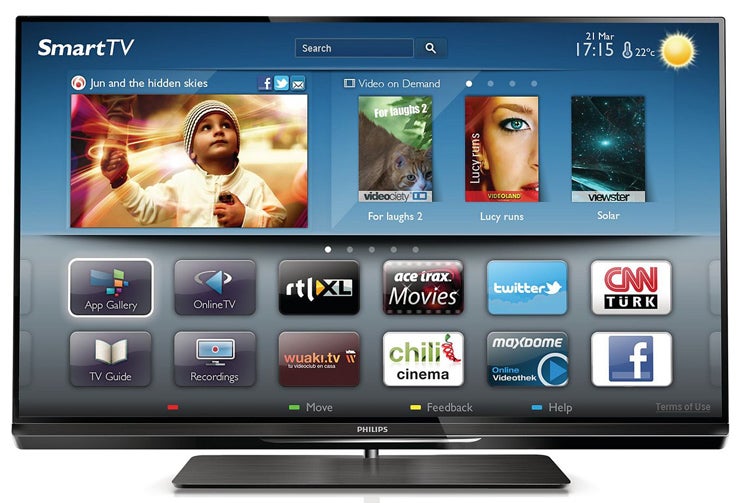
Verdict
Pros
- Mostly strong HD and standard def pictures
- Good multimedia playback support
- Excellent 3D playback
Cons
- Backlight inconsistency during very dark scenes
- Can be tricky to get the best out of
- Limited Smart TV service
Key Specifications
- Review Price: £599.00
- 32in LCD TV with edge LED lighting
- Passive 3D playback
- Smart TV online features
- Pixel Precise HD processing
- Multimedia playback via USB
Introduction
After the relatively high-end thrills of the highly impressive Philip 46PFL9707 and Philips 46PFL8007, today we’re shifting our gaze lower down the Dutch brand’s new TV range to its mid-level Philips 32PFL6007T: a 32-inch TV that can be yours for just £599. A sum that looks even more reasonable, moreover, when you consider that it’s 3D Ready and provides integrated Wi-Fi for taking you online with Philips’ latest Smart TV platform.
Philips 32PFL6007T Design
The Philips 32PFL6007T is a decent looker too. Its bezel satisfies the current fancy for slimness, measuring in at barely 1cm across. The black finish looks and feels surprisingly high quality too, and while its rear isn’t ground-breakingly slender, it certainly won’t be seen at Weight Watchers any time soon. Even the wedge-shaped and metallic-looking stand is a cut above the norm for the Philips 32PFL6007T’s price point.
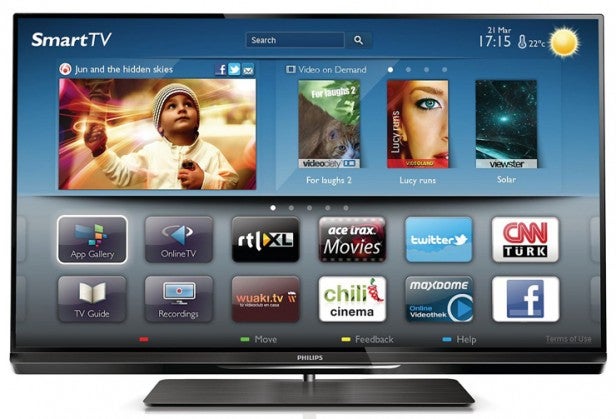
We were also pleasantly surprised to find the Philips 32PFL6007T clinging on to Philips’ exclusive Ambilight technology, whereby an array of LEDs casts pools of coloured light from the TV’s rear in a bid to boost the immersiveness of your viewing experience while also making it more relaxing – especially if you’re watching in a darkened room.
One further design point worth noting is that unlike the stands shipped with the 8007 and 9707 models, the Philips 32PFL6007’s stand does not feature built-in speakers. Here you’re dependent on the speakers built into the skinny TV chassis.
Philips 32PFL6007T Specs
Turning our attention to the Philips 32PFL6007T’s rear uncovers a decent selection of connections. Headliners are four 3D-capable HDMIs, a trio of USB ports, a LAN socket, and the aforementioned integrated Wi-Fi. Many of the ports available point to the Philips 32PFL6007 being a keen handler of today’s plethora of multimedia sources, so it’s no surprise to find the set handling all the most useful video, photo and music formats, either from USB devices or streamed from connected DLNA PCs.
Plus, of course, like any good mid-range or higher 2012 TV, the Philips 32PFL6007T can be taken online, either through an integrated Web browser, or more manageably through Philips’ Net TV system.
This new system benefits from a more sophisticated interface than the one found on the previous generation of Philips TV, even though you don’t get the handy QWERTY keyboard on the remote control’s rear that proved so welcome with the PFL8007 and PFL9707 models. (You can control the TV via apps for your phone or tablet computers, though, if you’re finding yourself struggling with the provided remote.)
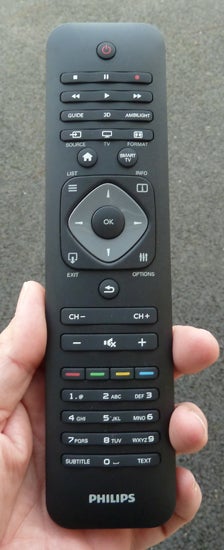
There is a rather glaring problem with Net TV, though; namely that it’s cupboard is distinctly bare on the content front. We’ve long maintained that Smart TV functionality is all about video apps, so it’s a shame to find Net TV currently only boasting a limited selection. The only ones we felt drawn to were the BBC iPlayer, BlinkBox, Youtube, Acetrax and possibly iConcerts.
There are the inevitable Skype, Twitter and Facebook social media apps as well, but overall you can’t help but rue the absence of such big-hitters as LoveFilm, Netflix, and the ITV Player (to name but a few). Especially when many of these content-rich platforms are available on most rival Smart TV systems.
We also experienced a number of occasions during the week or so that we had the Philips 32PFL6007 where the Philips network wasn’t available. This sort of thing is guaranteed to drive people up the wall fast.
Philips 32PFL6007T Picture Quality
Turning to the technology behind the Philips 32PFL6007T’s pictures, the first point is that it uses an edge LED lighting system. It’s also got a full HD resolution, while picture processing comes courtesy of Philips’ Pixel Precise HD system, complete with aspects focussing on colours, sharpness, motion reproduction, contrast and noise suppression.
The tools are provided within the TV’s rather sluggish and intimidating onscreen menus to adjust the degree to which the processing works on pretty much all the elements of a TV picture, and we strongly suggest you make the effort to familiarise yourself with them, for some can be more harmful than helpful, especially at their most powerful settings.
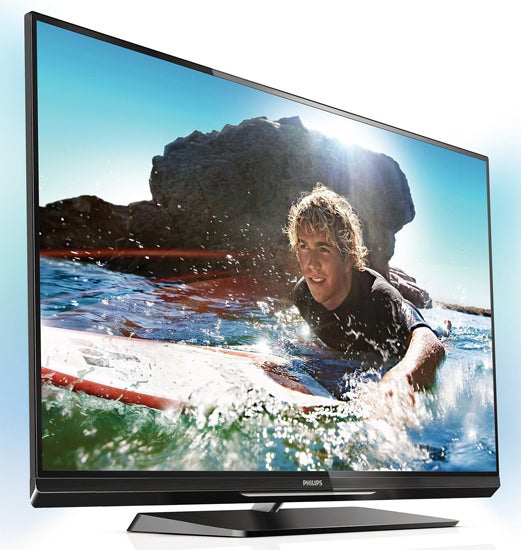
While on the subject of the Philips 32PFL6007T’s picture processing, we need to point out that Pixel Precise HD is nowhere near as powerful as the Perfect Pixel HD system found on Philips’ top-end TVs. But it’s still more powerful than the processing systems found on most mid-range TVs.
Philips claims a 400Hz ‘Perfect Motion Rate’ for the Philips 32PFL6007T thanks to a combination of a blinking backlight and motion interpolation processing. This should hopefully help it reduce the motion blurring that’s so common with relatively affordable LCD TVs.
Turning finally on our feature hunt to the Philips 32PFL6007T’s 3D playback, we’re actually surprised it’s there at all on such an affordable and small TV. After all, we’ve long argued that 3D’s impact is directly proportional to the size of screen it’s appearing on. Still, if Philips wants to give us 3D on the 32PFL6007 without seemingly charging us much at all for it, who are we to complain?! Especially as it’s included a couple of pairs of glasses for free with the TV.
In most ways the Philips 32PFL6007T continues the Philips 2012 ‘theme’ of leaving us largely impressed by what it can do. It certainly avoids most if not quite all of the pitfalls generally associated with the mid-to-low part of the 32-inch TV world.
Particularly impressive is its motion clarity. Even without using any of Philips’ motion processing there’s less resolution loss over moving objects than might have been expected. And if you do apply the HD Natural Motion system, blurring almost completely disappears, along with judder.
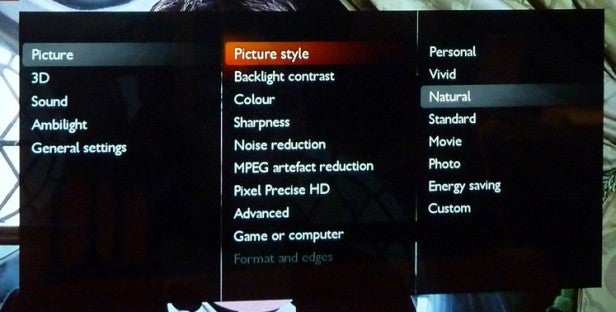
Some may find the motion processing makes pictures look a touch too video-like for their tastes, and we’d certainly only recommend using the very lowest power setting for the motion processing circuitry. But for us, being able to see motion looking so polished at the Philips 32PFL6007’s price level is more than enough compensation for movies maybe looking a bit more like video from time to time.
The crispness of the Philips 32PFL6007T’s motion helps pictures generally look markedly sharper than they often do on sub-£600 32-inch LCD TVs, with bags of detail and texture with HD sources that’s clearly visible despite the screen’s relatively small size.
More quality can be seen in the Philips 32PFL6007T’s colour reproduction. The palette on show is impressively nuanced, thanks to the way a wide tonal range is backed up by enough colour processing power to produce blends without the striping or patchiness you often get with cheaper 32-inch TVs.
Pictures aren’t as punchily dynamic as those of Philips’ higher-end TVs, but we’d take the accuracy on show here over the less subtle gaudiness of many similarly priced rivals any day.
Philips 32PFL6007T Picture Quality
More good news concerns the Philips 32PFL6007T’s handling of standard definition sources. Pixel Precise HD might not be Philips’ most powerful processing system, but it’s still potent enough to add enough extra detail to leave images looking sharp without making noise look too aggressive. So long as you’ve got the unhelpful sharpness boosting element of the processing turned off, anyway.
Predictably given the slimness of the Philips 32PFL6007’s bezel and its relative affordability, it struggles most with black level response. The dynamic contrast system is a touch clumsy, in that it can make its brightness adjustments look slightly too obvious at times. Yet if you don’t use it, dark images look rather grey and washed out.
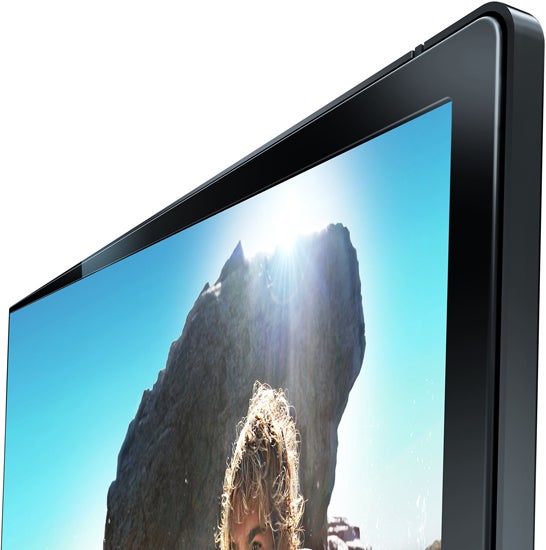
We were also a little disappointed to see an area of at times quite distracting backlight inconsistency, spreading out from part of the top left edge of the image.
The Philips 32PFL6007T can actually produce a slightly deeper black than most edge LED TVs at its price point once you’ve set it up to its best advantage. Though even at this point there’s a compromise in that the shadow detail levels of calibrated pictures are only fair.
Other smaller picture issues are a slightly noisy look to images, even without the sharpness boosting system engaged, and the potential for brightly lit skin tones to ‘flare out’ a little, as the screen fails to fully resolve subtle colour and brightness differences at the very brightest end of the spectrum.
When it comes to 3D, the Philips 32PFL6007T employs LG’s Passive system. Which works out very nicely indeed, allowing it to produce clean, natural-looking, bright and untiring 3D images devoid of the flicker and ghosting noise associated with Philips active 3D TVs.
Motion looks cleaner and more authentic in 3D than it does on the majority of mid-range 3D TVs too, and best of all the relative smallness of the Philips 32PFL6007T’s screen allows it to almost completely ‘hide’ passive 3D’s usual shortcomings of a slightly reduced resolution and some jaggedness over contoured edges.
The only complaint we can muster against a more or less exemplary mid-range 3D performance, in fact, is that inevitably 3D isn’t as immersive and therefore effective on a 32-inch screen as it is on much larger screens. But at least what 3D impact there can be from such a screen size is delivered with aplomb.
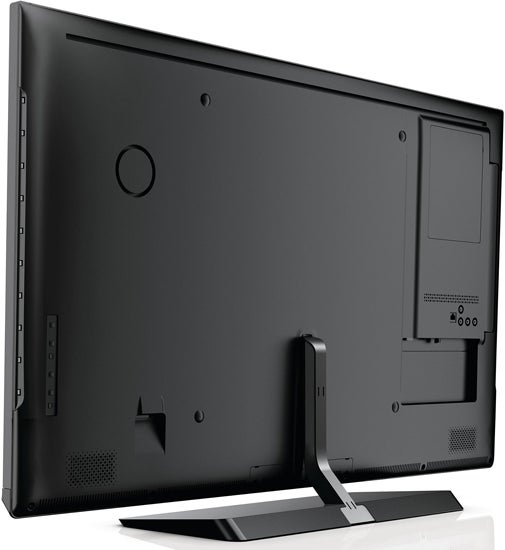
Many TVs we’ve tested that use LG’s passive 3D technology have curiously suffered with high levels of input lag, where the TV takes longer to produce pictures on screen than a fan of fast-reaction games will be happy with. However, the Philips 32PFL6007 is an exception to this, turning in a respectable average input lag measurement of around 38ms. This is a touch higher than the best screens around, but it’s also only around half as high as that of most passive 3D screens.
Please note, though, that achieving this figure requires you to activate the screen’s ‘Computer’ mode, and then turn off as much processing as you can find, including the set’s dynamic contrast and colour boosting features.
For a TV with such a tiny frame, the Phliips 32PFL6007 turns out a quite credible soundstage. Inevitably there’s not as much bass as we’d like, but the frame is sufficiently robust to deliver a fair amount of volume without succumbing to distortion; voices sound clear and natural even during action scenes; and treble detailing is apparent without sounding over-dominant.
Verdict
The Philips 32PFL6007T’s flawed presentation of dark scenes prevent it earning the same level of recommendation Philips’ other recent LCD TVs have. That said, its canny combination of multimedia features, Ambilight design and serious picture processing is strong for its price point, and except for when you’re watching very dark scenes its pictures are still unusually strong for the sub-£600 price level.
How we test televisions
We test every TV we review thoroughly over an extended period of time. We use industry standard tests to compare features properly. We’ll always tell you what we find. We never, ever, accept money to review a product.
Trusted Score
Score in detail
-
Features 9
-
3D Quality 9
-
Value 8
-
Design 8
-
2D Quality 8
-
Sound Quality 7
Features
| Size (Inch) | 32in |
| Display Type | LED |
| Max. Resolution | 1920 x 1080 |
| Full HD 1080p | Yes |
| Digital Tuner | Yes |
| Freeview HD | Yes |
| Freesat HD | No |
| 3D Ready | Yes |
| Contrast Ratio | 500000:1 |
| Refresh Rate (Hertz) | 400Hz |
Connectivity
| HDMI | 4 (v1.4) |
| Component | 1 |
| Composite | 1 |
| Scart | 1 (RGB) |
| Digital Audio Out | Yes (optical) |
| Headphone | 1 |
| Ethernet | Yes |
| WiFi | Yes (built-in) |
Physical Specifications
| Height (Millimeter) | 453.1mm |
| Width (Millimeter) | 724.4mm |
| Depth (Millimeter) | 34.3mm |
| Weight (Gram) | 7.85g |

